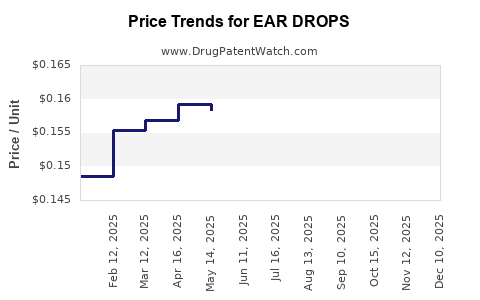Drug Price Trends for EAR DROPS
✉ Email this page to a colleague

Average Pharmacy Cost for EAR DROPS
| Drug Name | NDC | Price/Unit ($) | Unit | Date |
|---|---|---|---|---|
| EAR DROPS 6.5% | 00904-6627-35 | 0.13904 | ML | 2024-11-20 |
| EAR DROPS FOR SWIMMERS | 70000-0478-01 | 0.06500 | ML | 2024-11-20 |
| EAR DROPS 6.5% | 00904-6627-35 | 0.15616 | ML | 2024-10-23 |
| EAR DROPS FOR SWIMMERS | 70000-0478-01 | 0.06403 | ML | 2024-10-23 |
| EAR DROPS 6.5% | 00904-6627-35 | 0.16453 | ML | 2024-09-18 |
| EAR DROPS FOR SWIMMERS | 70000-0478-01 | 0.06300 | ML | 2024-09-18 |
| EAR DROPS 6.5% | 00904-6627-35 | 0.15990 | ML | 2024-08-21 |
| >Drug Name | >NDC | >Price/Unit ($) | >Unit | >Date |


